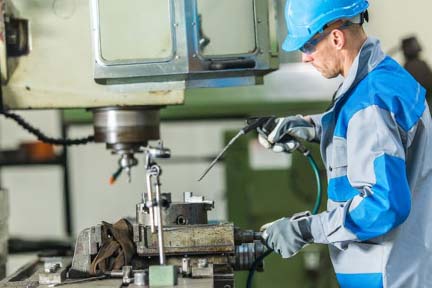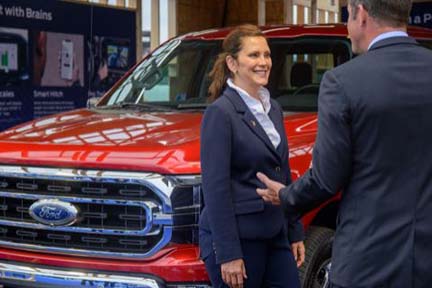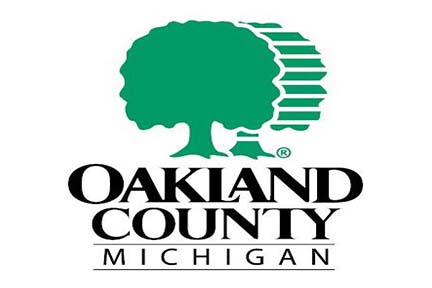
by Becky Andrus | Sep 27, 2021 | Regional News

Governor Whitmer Kicks Off Manufacturing Week, Highlighting Working People in Critical Statewide Industry
LANSING, Mich. – Governor Gretchen Whitmer has issued a proclamation declaring September 26 to October 2, 2021, as Manufacturing Week to recognize Michigan’s more than 11,000 unique manufacturing firms, which account for over 600,000 jobs and over $98 billion of total output annually.
“Michigan is home to hundreds of thousands of hardworking people who are dedicated to making our state home to countless innovative products we rely on every day,” Governor Whitmer said. “Our storied manufacturing industry plays a critical role in the MI New Economy plan that’s focused on supporting small businesses, creating better paying jobs, and investing in our communities. This Manufacturing Week, we celebrate the manufacturing workers, the union men and women, and the innovative companies who made invaluable contributions making Michigan the place that put the world on wheels, served as the arsenal of democracy, and built the middle class.”
Michigan has long served as a national leader in manufacturing job creation, with those jobs significantly impacting the state’s economy.
“The state’s manufacturing industry is pivotal to Michigan’s economy and is supported by a strong workforce,” said Susan Corbin, Michigan Department of Labor and Economic Opportunity director. “There are immediate opportunities for those interested in pursuing a career in manufacturing, and now is the time to explore jobs that have significant impact on your local communities and our state.”
Michigan has been the heart and soul of manufacturing in the U.S. for decades. The state has diverse manufacturing sectors in automotive, metals, machinery, chemical product, food and beverage, computer and electronic, natural resource, furniture and many others.
“Manufacturing offers high-paying, high-tech, and innovative careers that will be plentiful in the future. There will be more than 3.5 million jobs available in the next decade, and we appreciate Governor Whitmer understanding the importance of manufacturing, the leading sector and driving force of Michigan‘s economy,” said John Walsh, President and CEO, the Michigan Manufacturers Association.
There are numerous resources available to support Michiganders who are interested in exploring high-tech, high-skilled and well-paid career options in the manufacturing industry, whether it’s using the state’s career exploration tool, Pathfinder (Pathfinder.MiTalent.org), searching for open manufacturing jobs on Pure Michigan Talent Connect (MiTalent.org), or researching information about industry-specific careers at Going PRO (Going-PRO.com).
There are also resources available for manufacturing employers to support their immediate and long-term workforce needs; including LEO’s Back to Work: Employer Resources website (Michigan.gov/BackToWork), the Michigan Works! network and Pure Michigan Talent Connect.
To learn more about resources available for employers, sign up for the upcoming Employer Engagement webinar focused on the manufacturing industry, scheduled for Oct. 5 at 11 a.m. To register for this free event, visit https://bit.ly/3hA2rbl.
View a copy of the proclamation here.
|

by Becky Andrus | Sep 22, 2021 | Regional News

Gov. Whitmer on Budget that Puts Michiganders First Without Raising Taxes
The bipartisan budget makes the largest one-time deposit into Michigan’s rainy day fund and secures bold investments in postsecondary education, childcare, infrastructure, health care, and clean water
LANSING, Mich.—Governor Gretchen Whitmer issued the following statement after the legislature passed a bipartisan budget that puts Michiganders first and makes game-changing investments in families, communities, and small businesses. The governor plans to sign the bipartisan budget into law before Fiscal Year 2022 begins on October 1.
“Today, we came together to get things done for Michigan’s families, communities, and small businesses. I’ve always said that I will work with anyone who wants to put Michiganders first. I am grateful to the legislature for working with me to deliver real change that will make a difference in people’s lives.
“The budget delivers on the kitchen-table economic issues that matter most to Michiganders. It builds on three programs—Michigan Reconnect, Futures for Frontliners, and Going Pro—that help workers get the skills they need to earn a good-paying, in-demand job. The budget will also include funds to fix nearly 100 crumbling bridges across Michigan, including the iconic Miller Road Bridge next to the Ford factory in Dearborn. We were able to get funding to expand no- or low-cost child care to 105,000 additional children, so that parents can go back to the workplace knowing their children are in good hands. The budget also contains significant dollars to replace lead service lines in Benton Harbor and beyond, continue addressing PFAS, clean up contaminated sites, repair aging dams, and make buildings more energy efficient. And we also put $500 million into Michigan’s rainy day fund, which is the largest one-time deposit in state history. These dollars help ensure that Michigan is prepared for any future public health or economic crises.
“Today’s budget agreement proves that Michiganders elected a divided government, not a dysfunctional one. When we focus on tackling the big problems we face, we can make meaningful progress that improves people’s lives. As always, we will be conducting a thorough legal review of the legislation to ensure that all provisions in the budget are constitutional to take action to fix the pieces that aren’t. Now, with the budget out of the way, we can further collaborate to invest the billions in federal dollars we have received from the American Rescue Plan and the billions more we are expected to receive from the bipartisan infrastructure bill. I look forward to continuing to work with anyone, for everyone.”
|

by Becky Andrus | Sep 22, 2021 | Regional News

Gov. Whitmer details MI New Economy plan to grow our middle class, support small businesses and invest in our communities
MACKINAC ISLAND, Mich. – Today at the Mackinac Policy Conference, Gov. Whitmer detailed her economic agenda, including the unveiling of the three pillars of her bold $2.1 billion MI New Economy plan to grow Michigan’s middle class, support small businesses and invest in communities.
“I am laser-focused on tackling these big, structural challenges by growing Michigan’s economy, creating good-paying jobs and building industries of the future,” said Gov. Gretchen Whitmer. “The MI New Economy plan is a good start, and I look forward to working with key partners, the legislature and anyone who wants to put Michigan’s families, communities and small businesses first as we make these investments.”
The plan recognizes a strong economy isn’t only about creating jobs, but requires a focus on our state’s people and communities as well. That’s why MI New Economy has three pillars, each of which has specific and ambitious goals that will help state officials track progress on efforts to build a stronger and more resilient Michigan.
Pillar 1: Grow the Middle Class – No economic vision for the state can be complete if it doesn’t focus on eliminating poverty and lifting families into the middle class.
- Goal: 60% of adults with a postsecondary credential by 2030
- Goal: Lift 100,000 families out of working poverty during the next five years (FY22-FY26)
- Goal: Provide access to low or no cost childcare for 150,000 more families by 2024
Pillar 2: Support Small Business – To supplement the great economic development work our state already does, Michigan needs a focus on creating and growing more Main Street businesses.
- Goal: Top 10 state for small business job growth and revenue growth from 2022 to 2026
- Goal: Top 10 state for household income growth during the next five years (FY22-FY26)
- Goal: Top 10 state for growth in venture capital funding over the next five years (2022-2026)
Pillar 3: Build Strong Communities – Michigan’s residents deserve to live in vibrant communities with the kinds of services and amenities associated with a high standard of living.
- Goal: 100% access to high-speed internet and 95% adoption by households during the next five years, while continually investing in higher quality access (FY22-FY26)
- Goal: 75,000 new or rehabilitated housing units in five years (FY22-FY26)
“This plan will result in better jobs, better skills, more people re-entering the labor force and more people staying – and moving to – Michigan,” Lt. Governor Garlin Gilchrist II. “It will result in a new economy, a better economy, one that expands economic opportunity and prosperity for all.”
These pillars address the state’s largest economic challenges:
- There are too many jobs that don’t pay enough – over 1 million households are living in working poverty.
- Too many Michiganders are forced to delay life-saving medical procedures and car repairs, skip prescription refills and meals, and make incredibly difficult choices to meet their basic needs.
- In 2019 before the pandemic, 38% of households did not make enough to make ends meet, and an additional 10% are right on the edge.
- There aren’t enough workers to fill open jobs. Our unemployment rate is lower than the national average, but our labor force participation has been behind for a decade.
- Today, it stands at 59%, or 42nd in the nation. At the turn of the century, it was 68.8% and has fallen since then.
- There aren’t enough Michiganders with the skills necessary to fill high-skill jobs. We need to meet our Sixty by 30 goal to boost incomes and improve long-term outcomes for working families.
- There isn’t enough entrepreneurship in Michigan. For several years, we have been below average job growth for microbusinesses and second stage companies.
- Housing is unattainable or unaffordable in several communities. High-speed internet connection is lacking in certain areas and we face an above average shortage of renters and potential homeowners.
MI New Economy also builds on some of the most recent initiative successes that have helped Michigan build back successfully:
- Michigan established Michigan Reconnect and Futures for Frontliners to put 167,000 Michiganders and counting on a tuition-free path to higher education and skills training. Nearly 23,000 were already enrolled in classes last winter and summer semesters.
- The Poverty Task Force released its first set of 35 policy recommendations designed to drive down Michigan’s 37% ALICE (asset limited, income constrained, employed) rate with sustainable strategies that center equity as a goal.
- Through a $1 million investment, the MI Tri-Share pilot program has helped Michigan families afford childcare by dividing the cost equally between employees, their employer and the State of Michigan.
- From March 2020 through March 2021, MEDC launched 23 economic relief programs and deployed nearly $240 million in small business relief across all 83 Michigan counties.
- To address housing needs, MSHDA has financed $637.2 million in housing projects that created or preserved 7,467 units since Fiscal Year 2020.
- Governor Whitmer created the Michigan High-Speed Internet Office (MIHI) to make high-speed internet more affordable and accessible.
“Michigan cannot achieve a prosperous, equitable economy without vibrant communities. Investments in core assets like housing and broadband internet are essential to making our state more attractive both to existing residents and the entrepreneurs and workforce of the future,” said Luke Forrest, Executive Director, Community Economic Development Association of Michigan (CEDAM). “On behalf of hundreds of community-based organizations, we stand ready to help achieve this MI New Economy vision.”
To learn more about the MI New Economy plan, the state’s economic and workforce challenges and successes the state has seen to date, visit www.michigan.gov/MINewEconomy.
|

by Becky Andrus | Sep 21, 2021 | Regional News

Governor Whitmer Announces Initiative for Nation-Leading Wireless EV Charging Infrastructure in Michigan
Wireless charging advances Governor Whitmer’s goals for EV adoption and environmental sustainability in Michigan
PONTIAC, Mich. – While participating in the opening ceremony at Motor Bella today, Governor Gretchen Whitmer announced a new initiative to develop the nation’s first wireless charging infrastructure on a public road in the U.S. right here in Michigan. The development of a wireless dynamic charging roadway in Michigan is a step forward in addressing range anxiety and will accelerate the transition to all-electric transit fleets in Michigan, and beyond.
“Michigan was home to the first mile of paved road, and now we’re paving the way for the roads of tomorrow with innovative infrastructure the will support the economy and the environment, helping us achieve our goal of carbon neutrality by 2050,” said Governor Gretchen Whitmer. “This project reinforces my commitment to accelerating the deployment of electric vehicle infrastructure in Michigan and will create new opportunities for businesses and high-tech jobs amidst the transition to electric vehicles.”
The Inductive Vehicle Charging Pilot is a partnership between the Michigan Department of Transportation and the Office of Future Mobility and Electrification that will deploy an electrified roadway system that allows electric buses, shuttles and vehicles to charge while driving, enabling electric vehicles to operate continuously without stopping to charge. Electrified roadways have the potential to accelerate adoption of electric vehicles by consumers and fleet operations alike by enabling continuous vehicle operations and turning public streets into safe and sustainable shared energy platforms. As the first in the nation to deploy this forward-looking infrastructure, Michigan continues to secure its reputation as a leader in future transportation solutions and accelerate progress toward our carbon neutrality goals.
MDOT will release a Request for Proposal on Tuesday, September 28, 2021 to design, fund, evaluate, iterate, test and implement the Inductive Vehicle Charging Pilot along a one-mile stretch of state-operated roadway in Wayne, Oakland or Macomb counties. This partner will work closely with MODT, the Office of Future Mobility and Electrification, the Michigan Economic Development Corporation, and Michigan Department of Environment, Great Lakes, and Energy on this project. The RFP (Requisition 3524) will be posted to eProposal; which can be accessed through MILogin at MILogin for Third Party or at the following link starting on September 28.
“At MDOT, we know the future of mobility involves connectivity, and this initiative dovetails nicely with our other successes linking vehicles and infrastructure through technology,” said MDOT Director Paul C. Ajegba. “This is a model we will build on across the state to further promote the governor’s broad and ambitious vision.”
To date, MDOT has activated the largest vehicle-to-infrastructure technology deployment – nearly 600 miles – in the United States, including a first-of-its-kind connected and autonomous vehicle (CAV) corridor. Michigan is also home to the most diverse collection of automated vehicle and drone testing environments in the world, more mobility-related patents than any other state, and more engineers per capita than anywhere else in the world.
Today’s news builds on announcements by the administration in the past month, including the first round of Michigan Mobility Funding Platform funding grants to accelerate mobility and EV investments in the state, a robot delivery program to address last-mile delivery challenges in Detroit’s Corktown neighborhood; Detroit Smart Parking Lab, a new public/private sector collaboration launching the nation’s first-of-its-kind, real-world test site for parking solutions, also in Corktown; and a MOU between Michigan and Ontario on cross-border activities to spur technology innovations and transportation solutions that enhance crossings by land, air, and water.
“We’re in the midst of the most significant shift in the automotive industry since the Model T rolled off the assembly line more than a century ago, and Michigan is once setting the course manufacturing the vehicles of the future and deploying charging solutions that make EV adoption more widely available” said Trevor Pawl, Chief Mobility Officer with the Office of Future Mobility and Electrification. “This electrified roadway has the potential to accelerate autonomous vehicles at scale and turn our streets into safe, sustainable, accessible and shared transportation platforms.”
|

by Becky Andrus | Sep 21, 2021 | Regional News

Gov. Whitmer Secures Grants to Empower Women
Fostering Access Rights and Equity Grant will help women workers understand and exercise their rights and benefits in the workplace
LANSING, Mich. – Governor Whitmer today announced that the U.S. Department of Labor Women’s Bureau awarded the Michigan Department of Labor and Economic Opportunity (LEO) $350,000 in a Fostering Access Rights and Equity (FARE) grant to help women workers understand and exercise their rights and benefits in the workplace.
“Women have been disproportionately affected by the COVID-19 pandemic, and it is crucial that we step up to empower women at the workplace,” said Governor Whitmer. “I am grateful to Secretary of Labor Marty Walsh and the Biden Administration for their work in supporting women’s economic recovery by increasing access to resources. This FARE grant will help our community organizations connect women to affordable childcare and provide them with the tools that the they need to succeed.”
The Michigan Women’s Commission, housed within LEO, will administer the grant and work with community-based organizations in southeast Michigan to connect women to eligible benefits under the American Rescue Plan, prioritizing available child care subsidies and eligibility for additional benefits.
“With continued investments in programs and services that remove barriers that prevent women from full and continuous participation in the workforce, we will ensure Michigan women are fully accessing these opportunities,” said Susan Corbin, LEO director. “The Michigan Women’s Commission is uniquely positioned to help connect women to these resources, paving a path for more Michigan women, children and families to succeed.
The Michigan Women’s Commission will receive funding in the form of a grant to help women workers understand and exercise their rights and benefits in the workplace by doing the following:
- Providing outreach to low-income and marginalized women workers;
- Disseminating educational materials through varied platforms, including social media, in-person or virtual events, brochures and leaflets, one-on-one consultations, and other outreach;
- Assisting women workers with navigating and calculating benefits;
- Connecting and referring women workers to additional services, benefits, and/or legal assistance as needed, reasonable, and/or available; and
- Helping women to become focal points for rights, benefits, and assistance in their own communities (i.e., a train-the-trainer model for navigation).
“As our nation continues its recovery, we must include targeted programming for women workers who are affected by the coronavirus pandemic disproportionately,” said U.S. Deputy Secretary of Labor Julie A. Su. “Fostering Access, Rights and Equity grants fund vital partnerships to help inform women about their rights and benefits and ensure that women workers share in the prosperity of the nation’s economic recovery.”
“The Women’s Bureau is determined to overcome the systemic discrimination, racism and gender inequality that women have historically faced,” said Women’s Bureau Director Wendy Chun-Hoon. “The grants we’ve awarded today support organizations working on behalf of underserved and marginalized low-income women to ensure their rights to employment are protected and that they have access to all of the benefits available to them.”
|

by Becky Andrus | Sep 21, 2021 | Regional News
Two National Digital Government Organizations Award Oakland County’s Digital Response To Pandemic
Pontiac, Michigan – Two national awards are shining a spotlight on Oakland County’s digital response to the COVID-19 pandemic. The county received the Granicus Digital Government Award for its overall Digital Coronavirus Response and a Project Experience Award from the Center for Digital Government for its #OaklandTogether COVID-19 Tribute.
“These awards highlight the talent and dedication of the county’s communications, information technology, and public health teams throughout the pandemic,” County Executive Dave Coulter said. “When we learned about our first COVID-19 case, my administration made a commitment to be transparent and keep the public informed. Digital communications played a key role in that effort.”
Oakland County’s Digital Coronavirus Response for which it won the Granicus Digital Government Award included:
- A COVID-19 website and dashboards
- Press conferences and Board of Commissioners meetings by virtually accessible videos with online citizen feedback
- Streamlined CARES Act grant process, increasing transparency through GIS-powered dashboards
- Redesigning Workforce Development website to help connect job seekers and businesses with vital information while reducing number of service calls
- Launching a separate Vaccine hub with dashboard, FAQs, newsletters, and the ‘Save Your Spot’ online form. The hub has had more than 2.2 million pageviews, with 767,000 users since it launched in January 2021.
- The ‘Save Your Spot’ online form for vaccine appointment registrations which at its height had 600,000 names on the list
- A COVID-19 vaccination weekly newsletter, including a video message, to nearly 115,000 email and text subscribers
- The utilization of crowdsourcing for a COVID-19 safety video, art public service announcements competition, and the Oakland Together COVID-19 Tribute Gratitude and Remembrance Story maps
- The COVID-19 Tribute Month initiatives to honor and remember everything we’ve experienced together this past year implemented through a website, crowdsourced Remembrance and Gratitude Maps, a Tribute Walk, community discussion, and videos.
“Oakland County responded to COVID-19 with a host of digital services and tools,” Granicus said. “In addition to organizing virtual press conferences and board meetings, it developed a dedicated COVID-19 website, redesigned its workforce development website to connect job seekers to employers, and created a digital vaccine hub with a ‘save your spot’ online form that has generated over 2 million page views since its launch.”
The Center for Digital Government’s Project Experience Award highlights Oakland County’s collaborative effort to produce the #OaklandTogether COVID-19 Tribute. Oakland County lead the project and coordinated across county departments, including the County Executive Office, Health Division, Information Technology, and Oakland County Parks and Recreation, as well as a vendor, Bluewater Technologies. Tribute events included:
- A virtual discussion and COVID-19 update by County Executive Coulter and Lt. Gov. Garlin Gilchrist on the inequities people of color faced when confronting the virus. This video had more than 1,700 views.
- A video of county officials remembering one year of living with COVID-19 while reflecting on the pandemic and the tragedies, suffering, and heroism many experienced since March 10, 2020. The video received more than 2,700 views.
- Remembrance and Gratitude Story Maps which were crowdsourced story maps for stories and photos of those we have lost to COVID-19 on the Remembrance Map as well as appreciation for acts of kindness for frontline workers and support for local businesses on the Gratitude Map.
- The #OaklandTogether COVID-19 Tribute Walk, a half-mile immersive light display that honored the memories of those lost to COVID-19 and gave thanks to those who risk their health and safety the past year. More than 3,000 people attended in person, and another 5,243 viewed the livestream. After expenses were covered, $3,500 was donated to CARE House, a Pontiac-based agency that provides services for children who are the victims of child abuse and neglect.
To learn more about Oakland County’s digital resources for COVID-19, go to oakgov.com/COVID or OaklandCountyVaccine.com.
COVID Digital Response Awards 092021.pdf











